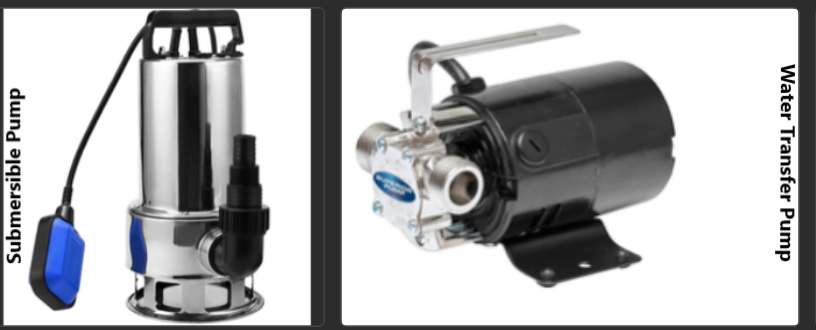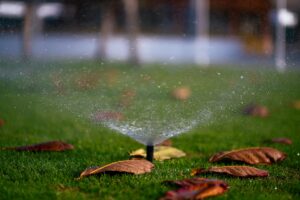After realizing that not much water had been coming out of the sprinkler, I started searching for ways to create water pressure. Water pressure is created by a pump. We need the minimum sprinkler pressure, which is around 30 psi (per square inch). I came across two potential pumps to buy:
The Submersible Pump
This is the first one I found. This pump submerges under the water, so it isn’t much of a hassle to maintain. It has a float switch, which rises to the top of the barrel as the rainwater fills it up. However, I realized that this would become a problem because as soon as the float switch reaches the top, the pump will turn on. The sprinkler would end up throwing water as it is still raining.
The pump will continue to run until there is no water left in the barrel, and the float has reached the bottom. It understands when the barrel has been emptied, so it is inactive until it starts raining again.
The Water Transfer Pump
Unlike the submersible pump, the water transfer pump has to remain outside right next to the barrel. These pumps work by pushing water from the inlet to the outlet. A small, plastic little motor inside the pump runs at massive speeds. As water comes in through the inlet, the motor runs, increasing the speed of the water. It exits through the outlet hose. The pump is attached to the barrel from one end (through a hose). As the water comes through the hose, it goes through the pump and quickly comes out from the other side into another hose (which is leads to the sprinkler). Although the pump is small, it can create throw the water to a far distance.
Think of it as a fan. When the fan is off and you stand near it, the air surrounding is completely still. But when you turn the fan on, you can start the feel the air around it, pushing against your hand. This is because the fan is increasing the speed of the air. in the room.
However just like the submersible pump, there were some flaws to this one. The pump doesn’t stop running until you unplug it. The sump pump can tell when the barrel is empty, but the transfer pump will still keep running. This can cause it to burn out, destroying the entire pump. In order to make sure this doesn’t happen, I will have to stand and watch the sprinklers run until I hear a loud sound coming from the transfer pump. As soon as you hear this, you unplug it.

Conclusion:
After some debating, I ended up buying the water transfer pump because I didn’t want the water to be pumping while it is still raining. With the pump that I bought, I chose when to turn it on. The pump resulted in the water coming out of the sprinkler at a much higher rate, and it can now water a great portion of my lawn.
![You are currently viewing Rain Harvesting – The Pump [Part 3/3]](https://krucs.com/wp-content/uploads/2022/05/cover-photo1-scaled.jpg)


